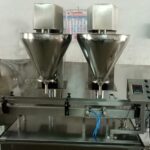
About Us:
Eva Pack Machinery is a dynamic and innovative leader in the packaging and machinery industry. With a strong commitment to excellence, we specialize in designing, manufacturing, and supplying cutting-edge packaging solutions to meet the diverse needs of our clients. Our dedicated team of professionals combines extensive industry experience with a passion for technological advancement, ensuring that our products are reliable, efficient, and at the forefront of industry trends. We take pride in delivering tailor-made solutions that enhance productivity and efficiency for businesses across various sectors. Eva Pack Machinery is your trusted partner for premium packaging machinery, setting new standards in quality and performance.
# About Eva Pack Machinery: Innovating Packaging Solutions
## Elevate Your Packaging Efficiency with Eva Pack
Welcome to Eva Pack Machinery, where innovation meets precision in packaging solutions. Our cutting-edge machinery redefines efficiency and reliability in the packaging industry.
## Commitment to Excellence
At Eva Pack, we are dedicated to providing state-of-the-art packaging solutions. With a focus on innovation and quality, we aim to exceed your expectations, ensuring your products are packaged with the utmost precision and efficiency. Discover the future of packaging technology with Eva Pack Machinery.
Infrastructure
We are one of the largest manufacturers and exporter of Servo Based Liquid Filling Machine, Capping Machine, Liquid Filling Machine and Powder Filling Machine. We have adequate own resource to Manufacturing good quality machine & handle the project for uninterrupted supply throughout the year.
Workshop & Equipment
We have 1000 Sq. Feet good & enough working area for Manufacturing good quality machine & handle the project; we have highly experience worker & inspection team. Company has access to Quality mother machines to make product reliable and consistent
Administration
Administration is handled by a Mechanical Engineer & Electric Engineer a having experience in the field of manufacturing, Q.c., Maintenance, Design and Co-ordination.
















